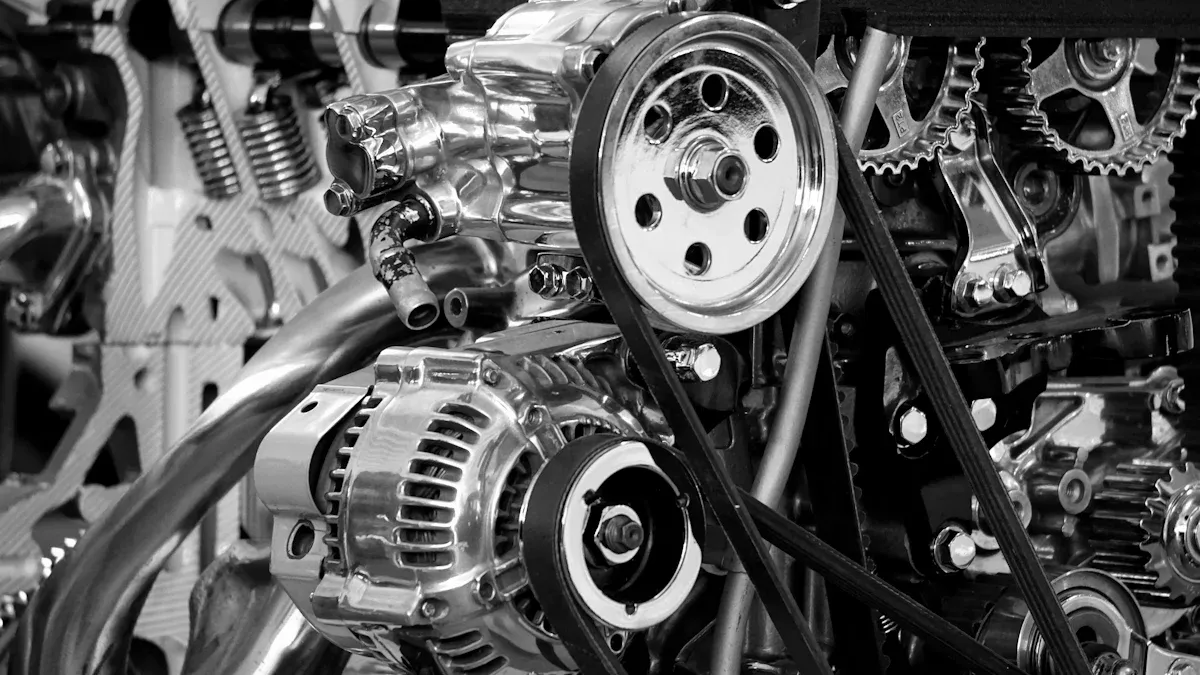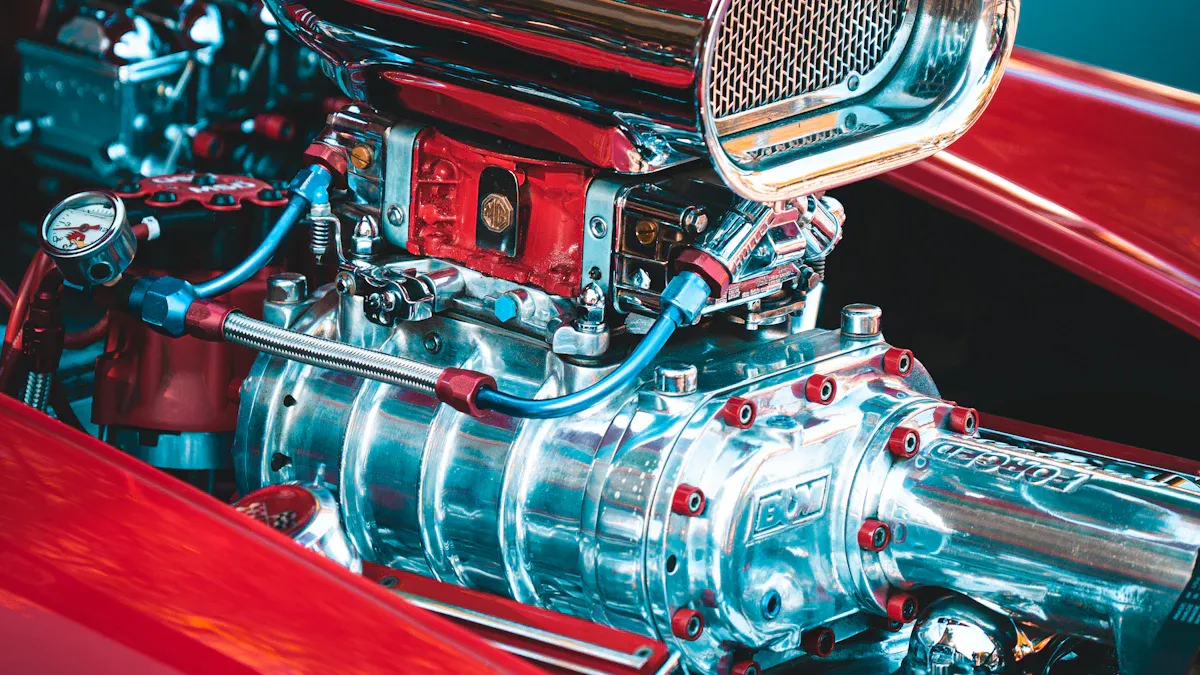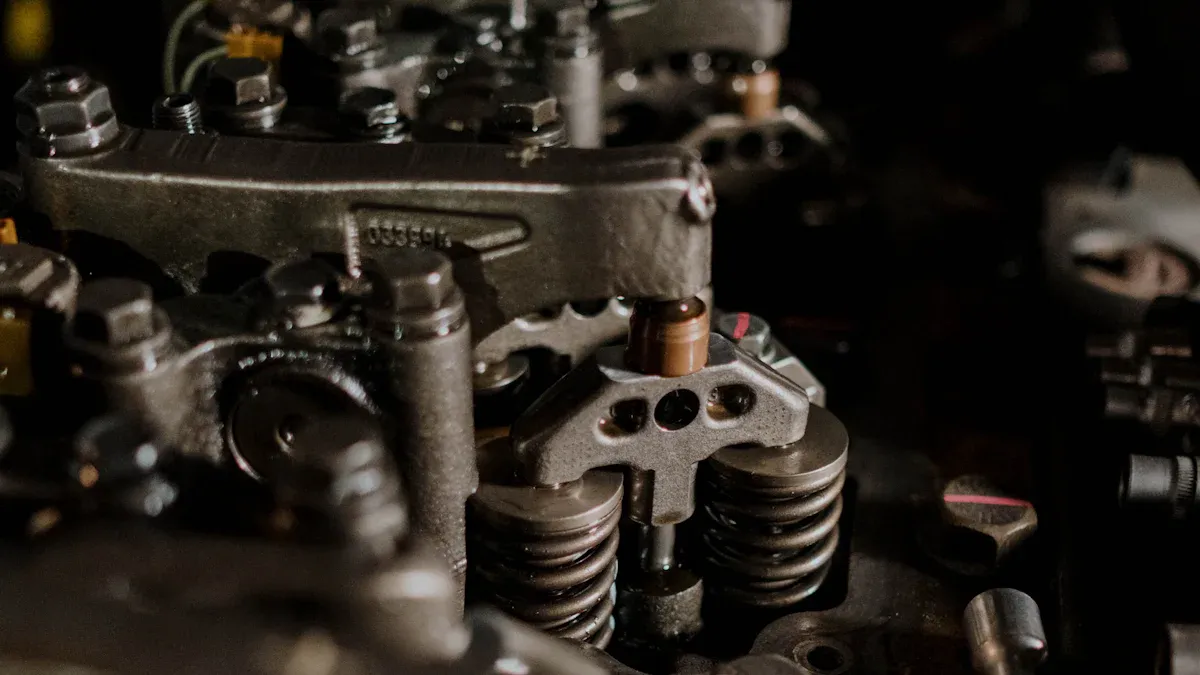
Selecting the appropriate coating for automotive components significantly affects performance, durability, and cost. When faced with the need for a solution that endures wear, extreme temperatures, and tough conditions, TAC Coated components stand out. With their advanced properties, they deliver exceptional resistance and long-lasting performance, revolutionizing modern automotive requirements.
Key Takeaways
- TAC Coated parts last longer and are tougher than regular coatings. They work great for high-performance cars.
- Spending on TAC Coated parts can save money over time. They need less fixing and replacing because they last longer.
- Picking TAC Coated parts helps the environment. They make less waste and use fewer bad chemicals than regular coatings.
Traditional vs TAC Coated: Key Differences
Defining Traditional Coatings
Traditional coatings have been the standard in the automotive industry for decades. These coatings typically include materials like paint, powder coatings, or electroplated layers. They provide basic protection against corrosion and wear. You’ll often find them used in vehicles that operate under normal conditions. However, traditional coatings can struggle when exposed to extreme environments. Their performance tends to degrade over time, especially in high-temperature or highly abrasive settings.
Tip: Traditional coatings work best for vehicles that don’t face harsh conditions or require advanced durability.
What Makes TAC Coated Components Unique?
TAC Coated components stand out due to their advanced technology. TAC, or Thin Advanced Coating, uses innovative processes to create a thin yet highly durable layer. This layer offers superior resistance to wear, corrosion, and extreme temperatures. Unlike traditional coatings, TAC Coated components maintain their integrity even in the harshest environments. You’ll notice their application in high-performance vehicles or systems requiring lightweight yet robust materials.
Comparing Durability and Resistance
When comparing durability, TAC Coated components outperform traditional coatings. They resist wear and tear more effectively, extending the lifespan of automotive parts. Additionally, TAC Coated surfaces handle extreme temperatures and corrosive environments without breaking down. Traditional coatings, while cost-effective initially, often require frequent maintenance or replacement. This makes TAC Coated components a more reliable choice for long-term performance.
Performance and Durability of TAC Coated Components

Wear and Tear Resistance
Automotive components face constant friction and pressure during operation. Over time, this leads to wear and tear, reducing their efficiency. TAC Coated components excel in resisting these effects. The thin yet durable coating minimizes surface damage caused by repeated use. This means you can rely on these parts to maintain their performance for longer periods. Unlike traditional coatings, which may chip or degrade, TAC Coated surfaces stay intact even under heavy stress. This makes them ideal for high-performance vehicles or systems that demand reliability.
Note: Choosing TAC Coated components can save you from frequent repairs or replacements caused by wear.
Thermal Resistance in High-Temperature Conditions
High temperatures can weaken many materials, especially in automotive systems like engines or exhausts. TAC Coated components are designed to withstand extreme heat without losing their structural integrity. The advanced coating acts as a barrier, protecting the underlying material from thermal damage. Whether you’re driving in scorching climates or pushing your vehicle to its limits, these components ensure consistent performance. Traditional coatings often fail in such conditions, leading to costly repairs.
Longevity in Harsh Environments
Harsh environments, such as salty coastal areas or regions with abrasive dust, can quickly corrode or damage automotive parts. TAC Coated components offer superior protection in these settings. The coating resists corrosion, abrasion, and chemical exposure, ensuring the parts last longer. This durability reduces the need for frequent maintenance, saving you time and money. If you operate vehicles in challenging conditions, TAC Coated components provide a dependable solution.
Cost-Effectiveness of Traditional vs TAC Coated Components
Initial Investment and Installation Costs
When comparing costs, traditional coatings often appear more affordable upfront. Their materials and application processes are simpler, making them a budget-friendly choice for many. However, TAC Coated components require advanced technology and specialized equipment for application. This results in higher initial costs. If you prioritize long-term performance over short-term savings, the investment in TAC Coated components becomes worthwhile. Their durability reduces the need for frequent replacements, balancing out the higher upfront expense.
Long-Term Maintenance and Repair Savings
Maintenance costs can quickly add up, especially for components exposed to harsh conditions. Traditional coatings tend to degrade faster, leading to frequent repairs or replacements. This increases your overall expenses over time. TAC Coated components, on the other hand, offer superior resistance to wear, corrosion, and extreme temperatures. Their longevity minimizes maintenance needs, saving you money in the long run. By choosing TAC Coated parts, you can reduce downtime and keep your vehicle running efficiently.
Scalability and Availability in the Market
Traditional coatings are widely available and easy to source. This makes them a convenient option for large-scale projects. TAC Coated components, while less common, are gaining popularity due to their advanced properties. Manufacturers are increasingly adopting TAC Coating technologies, improving their availability. If you need high-performance parts, the growing market for TAC Coated components ensures you can find what you need without compromising quality.
Real-World Applications of TAC Coated Components

High-Performance and Lightweight Vehicles
TAC Coated components play a vital role in high-performance and lightweight vehicles. These vehicles demand materials that are both strong and light to improve speed and efficiency. TAC Coated parts meet these needs by offering exceptional durability without adding unnecessary weight. For example, you’ll find these components in sports cars and electric vehicles, where every ounce matters. Their ability to resist wear and maintain performance under stress makes them a top choice for manufacturers aiming to push the limits of automotive design.
Tip: If you’re looking to enhance your vehicle’s performance while keeping it lightweight, TAC Coated components are worth considering.
Use in Corrosive and Abrasive Environments
Vehicles operating in harsh environments face constant exposure to corrosive elements like saltwater or abrasive materials like sand. TAC Coated components provide a reliable solution in these conditions. Their advanced coating resists corrosion and abrasion, ensuring the parts last longer. This makes them ideal for off-road vehicles, coastal fleets, or industrial machinery. By choosing TAC Coated parts, you can reduce the risk of damage and extend the lifespan of your vehicle.
Applications in High-Temperature Automotive Systems
High-temperature systems, such as engines and exhausts, require materials that can withstand extreme heat. TAC Coated components excel in these applications. The coating acts as a protective barrier, preventing thermal damage and maintaining structural integrity. Whether it’s a high-performance engine or a heavy-duty truck, these components ensure consistent performance even under intense heat. Traditional coatings often fail in such conditions, but TAC Coated parts provide a dependable alternative.
Environmental Impact and Sustainability of TAC Coated Components
Environmental Challenges of Traditional Coatings
Traditional coatings often rely on materials and processes that harm the environment. Many of these coatings use volatile organic compounds (VOCs), which release harmful gases into the atmosphere. These emissions contribute to air pollution and climate change. Additionally, traditional coatings may involve heavy metals or toxic chemicals that can contaminate soil and water during production or disposal. Recycling components with traditional coatings is also challenging, as the coatings often require energy-intensive removal processes. This creates more waste and increases the environmental footprint of automotive manufacturing.
Sustainability Benefits of TAC Coating Processes
TAC Coated components offer a more sustainable alternative. The advanced coating process uses fewer harmful chemicals and produces minimal waste. Unlike traditional coatings, TAC Coating technology focuses on efficiency and precision, reducing material usage. This not only lowers environmental impact but also conserves resources. The durability of TAC Coated parts further enhances sustainability. By lasting longer, these components reduce the need for frequent replacements, cutting down on waste and energy consumption. Choosing TAC Coated parts helps you support eco-friendly practices while maintaining high performance.
Future Trends and Regulatory Compliance
The automotive industry is shifting toward greener technologies, and TAC Coated components align with this trend. Governments worldwide are introducing stricter regulations to limit VOC emissions and promote sustainable manufacturing. TAC Coating processes meet these standards, making them a future-proof choice. As technology advances, you can expect even more eco-friendly innovations in TAC Coating methods. By adopting these components, you stay ahead of regulatory changes and contribute to a cleaner, more sustainable future.
TAC-coated components offer unmatched durability, resistance, and sustainability compared to traditional coatings. Their ability to withstand wear, extreme temperatures, and harsh environments makes them a superior choice.
Recommendation: If you value long-term performance and eco-friendliness, TAC-coated components are worth the investment. Always match your coating choice to your vehicle’s specific needs for optimal results.
FAQ
What does TAC stand for in TAC Coated components?
TAC stands for Thin Advanced Coating. It refers to a high-tech process that creates a thin, durable layer on automotive parts for enhanced performance and longevity.
Are TAC Coated components worth the higher initial cost?
Yes, they are. Their durability reduces maintenance and replacement expenses over time, making them a cost-effective choice for long-term use in demanding conditions.
Can TAC Coated components be used in all vehicles?
You can use TAC Coated components in most vehicles. They are especially beneficial for high-performance, lightweight, or vehicles operating in extreme environments.


